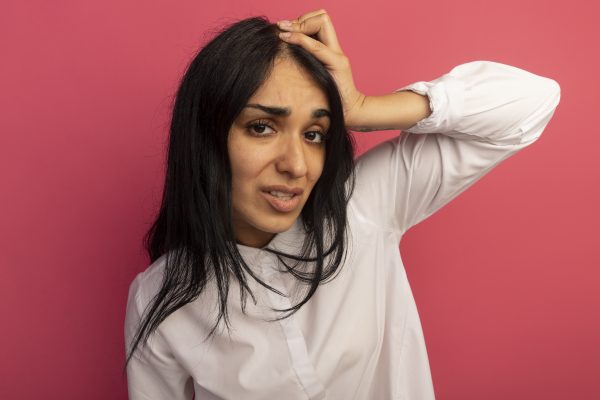
Worried about finding too much hair in your brush every single time you comb your locks? You might be facing female pattern hair loss, a common issue many women experience. Known as androgenetic alopecia, this condition prompts a quest for understanding and solutions. This guide aims to equip you with knowledge about its causes, types, and treatments, guiding you through managing hair loss effectively. Discover how to tackle thinning hair, and bald spots, and promote hair growth as we explore treatments and preventative strategies for healthier hair.
What Is Female Pattern Baldness?
Female pattern baldness, medically termed androgenetic alopecia, is the most common type of hair loss affecting women. This condition is characterised by a progressive thinning of hair, primarily affecting the crown and frontal scalp, while often preserving the frontal hairline. At its core, androgenetic alopecia involves the miniaturisation of hair follicles, a process where hair follicles shrink over time, leading to a shorter anagen phase—or growth phase—of the hair cycle. This results in the hair shaft becoming finer and thinner with each cycle of hair growth. The underlying causes are complex, intertwining genetic predisposition with hormonal influences, notably androgens, which are commonly associated with male pattern baldness but also play a significant role in female hair loss. Recognising the early signs of female pattern baldness, such as noticing hair loss or the appearance of bald spots, is crucial for timely intervention and treatment.
What Causes Female Pattern Hair Loss?
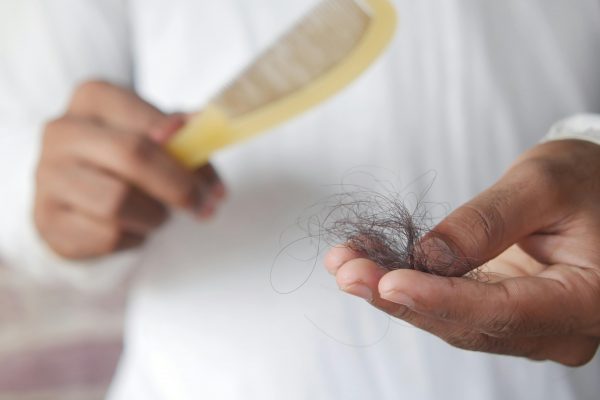
Grasping the root causes of female pattern hair loss is essential for its effective management and potential alleviation. Below are the chief contributors:
Genetic Predisposition
The root of female pattern hair loss lies in one’s genes. If you have family members who have experienced similar types of hair loss, you might be more predisposed to developing androgenetic alopecia. This hereditary trait influences how sensitive your hair follicles are to androgens, potentially leading to hair follicle shrinkage and a shorter hair life cycle.
Hormonal Changes
Hormonal shifts play a significant role in female pattern baldness. Changes in androgen levels, such as those experienced during menopause, can significantly impact hair growth. These hormones can cause hair follicles to diminish, resulting in thinner hair strands and a visible reduction in hair volume.
Ageing
As we age, the rate of hair growth naturally slows down. The anagen phase shortens, leading to more hair shedding and less hair growth. This natural progression can exacerbate the appearance of thinning hair, making female pattern hair loss more noticeable with time.
Medical Conditions
Certain medical conditions, including polycystic ovary syndrome (PCOS), thyroid disorders, and alopecia areata, can contribute to hair loss in women. Blood tests can help identify underlying health issues that might be affecting your hair growth cycle, shedding light on potential causes of hair loss.
Nutritional Deficiencies
A lack of essential nutrients can also lead to thinning hair. Iron, protein, and vitamin D are crucial for healthy hair growth. When the body is deprived of these nutrients, it may result in hair shedding and a slower rate of hair regrowth, contributing to the overall thinning appearance.
What Does Female Pattern Baldness Look Like?
Identifying female pattern baldness, or androgenetic alopecia, early can be pivotal in managing and potentially mitigating its impact. Unlike male pattern baldness, which often starts with a receding hairline or bald spot at the crown, female pattern hair loss presents differently. Here’s what to look out for:
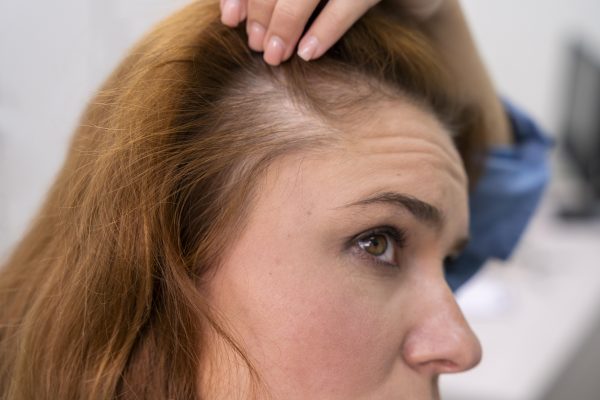
The hallmark of female pattern baldness is a gradual thinning of hair primarily on the top and crown of the scalp. This thinning may be more noticeable as the part in your hair widens, subtly at first, but becoming more pronounced over time.
Diffused Hair Loss
Rather than bald spots, women tend to experience a diffused thinning across the scalp. This means you might notice hair shedding more evenly, without distinct bald patches but with an overall decrease in volume.
Retained Hairline
Unlike men, women generally maintain their frontal hairline. The thinning is most evident behind this line, making it less noticeable in the initial stages.
Visible Scalp
As hair continues to thin, the scalp may become more visible through the remaining hair. This visibility can be a clear indicator of the progression of female pattern hair loss.
Texture Changes
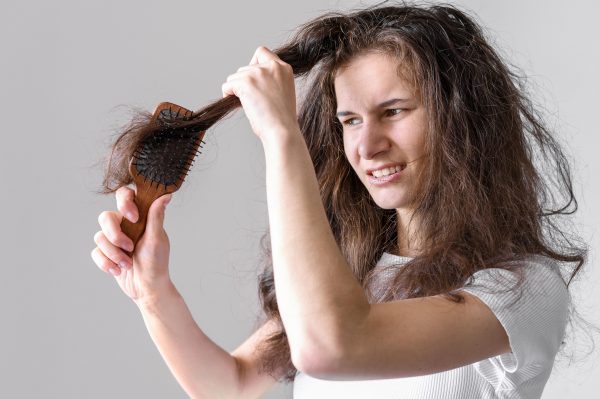
Alongside thinning, you might observe changes in your hair’s texture. Hair may feel finer, softer, or more brittle due to the shrinking of the hair follicle, affecting the hair shaft produced.
Types of Female Hair Loss
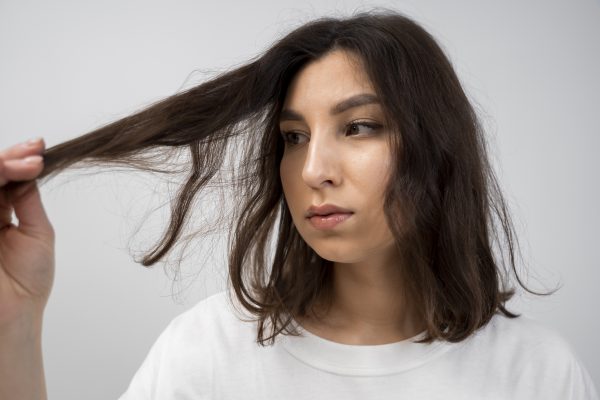
Let’s demystify the common types of female hair loss experienced by women, offering clarity and understanding:
Androgenetic Alopecia
The most prevalent form of hair loss in women, known as androgenetic alopecia, is characterized by thinning hair across the top of the head and the crown. This condition is influenced by genetics and hormonal changes.
Telogen Effluvium
A temporary condition often triggered by stress, illness, or hormonal changes, leading to widespread hair thinning. It occurs when a large number of hair follicles enter the resting phase (telogen), resulting in increased hair shedding.
Alopecia Areata
Alopecia areata, an autoimmune disorder, causes patchy hair loss on the scalp and possibly other parts of the body. It can range from small, discrete areas of baldness to more extensive bald spots.
Traction Alopecia
Caused by constant pulling or tension on hair strands over time, often due to certain hairstyles like tight braids, ponytails, or extensions. This can lead to a gradual loss of hair, primarily around the hairline and temples.
Cicatricial Alopecia (Scarring Alopecia)
A rare group of disorders that destroy hair follicles, replacing them with scar tissue. This type of hair loss is permanent, as the follicle is irreversibly damaged.
Anagen Effluvium
Rapid hair loss results from medical treatment, such as chemotherapy, which poisons the hair follicle during its active growth phase (anagen). This hair loss is usually temporary, with hair typically regrowing after treatment ends.
Effective Treatments for Female Pattern Baldness
Addressing female pattern baldness requires a multifaceted approach, combining lifestyle adjustments with medical interventions to stimulate hair growth and manage hair loss. Below are the most effective treatments available:
Topical Treatments
Minoxidil, sold under various brand names, is one of the most common over-the-counter treatments for hair loss. Applied directly to the scalp, it can stimulate hair growth and slow down hair loss in women experiencing female pattern baldness. Its application is recommended only under professional guidance.
Oral Medications
In some cases, doctors may prescribe oral treatments such as spironolactone, which helps to reduce the production of androgens, thereby slowing hair thinning and promoting hair density.
Platelet-Rich Plasma (PRP) Therapy
An advanced Bodycraft treatment, PRP Hair Treatment involves the injection of your platelets into the scalp to stimulate hair follicle growth. PRP is believed to harness the body’s natural healing processes and is increasingly popular for its effectiveness in treating androgenetic alopecia.
Growth Factor Concentrate (GFC) Therapy
Similar to PRP, Bodycraft’s GFC Hair therapy uses a concentration of growth factors derived from your blood. These growth factors are injected into the scalp to enhance hair growth by rejuvenating hair follicles and improving scalp health.
View this post on Instagram
QR678 Treatment
Bodycraft’s revolutionary QR678 hair growth treatment involves injecting a proprietary peptide formula into the scalp. This formula is designed to stimulate the hair follicles, promote hair growth, and reduce hair loss without the need for invasive surgery.
View this post on Instagram
Hair Botox
Hair Botox is a non-invasive treatment that involves applying a deep conditioning formula to the hair and scalp. This Bodycraft treatment works to nourish and revitalise hair strands, improving their texture and appearance. This method is ideal for individuals seeking a rejuvenating treatment with no downtime.
Hair Transplant Surgery
Surgical options like hair transplantation can be considered for more advanced hair loss cases. This procedure involves moving hair from one part of the scalp to another and is most effective for those with sufficient donor hair.
How Can You Prevent Female Pattern Baldness?
Incorporating preventative measures can significantly mitigate its onset. Below are practical steps to safeguard your locks:
Maintain a Balanced Diet

Ensure your diet is rich in vitamins, minerals, and proteins that support hair health. Nutrients like iron, vitamin D, zinc, and omega-3 fatty acids are essential for maintaining healthy hair follicles and stimulating hair growth.
Minimise Stress
High levels of stress can lead to hair shedding. Incorporate stress-reduction techniques such as yoga, meditation, or regular exercise into your routine to help manage stress levels.
Avoid Harsh Hairstyles
Tightly pulled hairstyles can cause traction alopecia, leading to hair loss. Opt for looser hairstyles that don’t put excessive pressure on your hair follicles.
Use Gentle Hair Care Products
Choose shampoos, conditioners, and styling products that are gentle on your hair and scalp. Avoid products with harsh chemicals that can damage hair follicles and exacerbate hair loss.
Limit Heat Styling
Frequent use of hair dryers, straighteners, and curling irons can weaken hair strands and contribute to hair loss. Try to minimise heat styling and always use a heat-protectant product.
Regular Scalp Massages
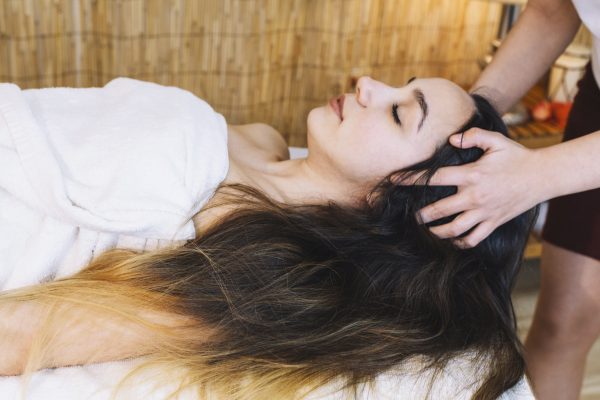
Massaging your scalp can stimulate blood circulation and promote hair growth. Use gentle motions with your fingertips or a soft-bristled brush to massage your scalp regularly.
Consult a Specialist
If you’re noticing hair loss, consider consulting a dermatologist or trichologist. They can provide personalized advice and treatment options based on your specific condition.
The Takeaway
To sum up, managing female pattern hair loss requires understanding and the right guidance. At Bodycraft, we’re committed to empowering women with knowledge and effective treatments like PRP therapy and Hair Botox. Our team of experts is dedicated to providing personalized solutions tailored to your unique needs, ensuring you receive the care and support you deserve on your journey to healthier hair. Book an appointment now!
FAQs related to Female Pattern Baldness
1. Can female pattern hair loss be reversed?
Treatments like minoxidil can stimulate hair growth and, in some cases, partially reverse thinning. However, the effectiveness varies from person to person, with the best outcomes seen in the early stages of hair loss.
2. Can female pattern hair loss be stopped?
Treatments like Hair Botox can improve hair texture and appearance. Hair Botox, a deep conditioning treatment, doesn’t directly stop hair loss but can make hair look fuller and healthier, thereby minimising the visual impact of thinning.
3. Can stress cause female pattern hair loss?
Yes, stress is a significant factor that can exacerbate female pattern hair loss. Stressful events can trigger hair loss called telogen effluvium, increasing hair shedding. While stress-related hair loss is usually temporary, it can worsen existing female pattern baldness.
4. Can female pattern baldness be cured naturally?
No, unfortunately, there are no natural cures for female pattern baldness. While a healthy lifestyle and diet can support overall hair health, they are not effective in reversing genetic hair loss.
5. Does PRP work for female pattern baldness?
Platelet-rich plasma (PRP) therapy has shown promising results in treating female pattern baldness. By injecting your platelets into the scalp, PRP works to stimulate hair follicles and promote new hair growth. Our doctors suggest GFC treatment over PRP for certain cases, as both treatments have demonstrated efficacy in addressing female pattern baldness.